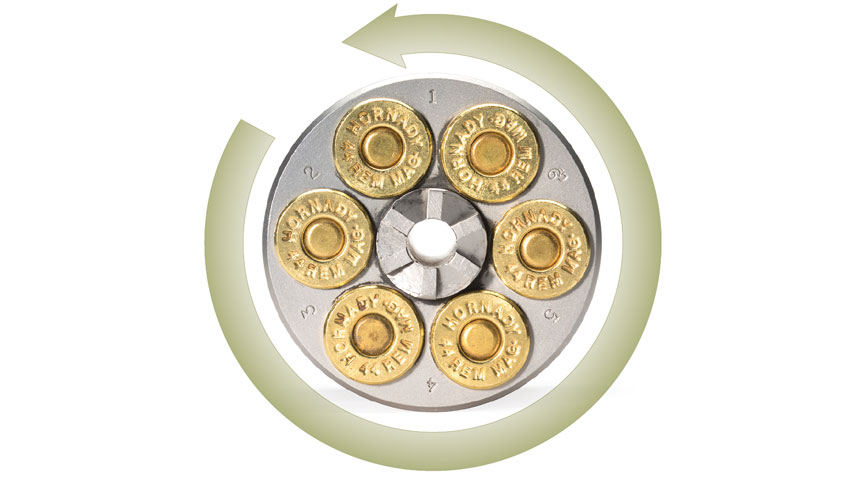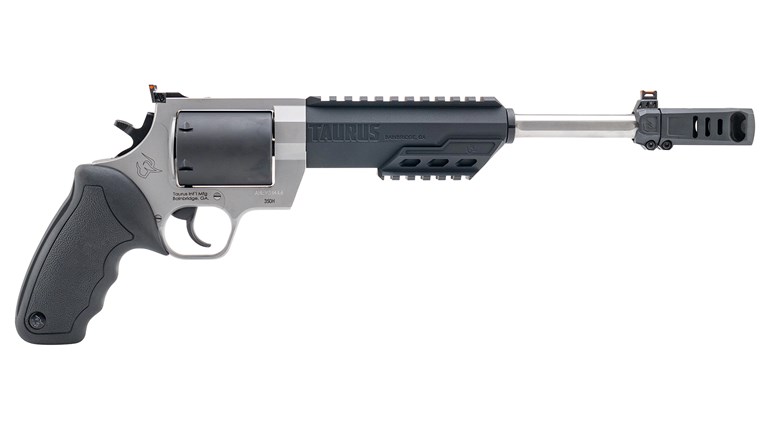
I am, undoubtedly, an advertising company’s greatest nightmare. I just don’t do fads. I wear the same brand of jeans I wore in college. I comb my hair the same way that I did back then and would probably still use Brylcream (if I could still find it locally). I tend to find stuff that works and stick with it. One of the guns that has always worked and will always work for concealed carry is a revolver.
Along the same lines, though, it will probably not shock you to find out that I still clean my guns with Hoppes No. 9 and elbow grease. I like gunleather that is really made out of leather, and I like revolvers that are made out of blue steel and walnut—with a subtle nod toward ivory and stag panels/stocks—even for concealed carry duty.
However, that’s not to say I look down my nose at all change. I do have a smartphone. I prefer indoor toilets. And I like the way that the concealed-carry industry has expanded to find stronger and lighter materials from which to build guns. And, in many cases it has been possible to increase the round count without making the personal-defense gun so heavy that no one would carry it. Not all fads are bad.
Now it appears that I have managed to live long enough for double-action (DA) concealed-carry revolvers to come back into style. About a year ago, Kimber announced its very first DA revolver, the K6s. Most recently, Nighthawk has begun importing the fine German revolvers from Korth. Colt has its Cobra once again, and, though not a concealed carry gun by any means, Ruger has just unveiled a GP100 chambered in .44 Spl. In the meantime, Smith & Wesson continues to do a brisk business in revolvers. Given this trend, it might be an excellent idea to examine the double-action wheelgun’s value as a concealed carry tool. Believe me, it has a good deal of value in that regard.
When it comes to caliber choices, the revolver doesn’t have to take a backseat to anyone or anything. Good-quality revolvers are available in virtually all of the popular defensive calibers that are manufactured today. It’s a consumer’s market. Pick a caliber you can handle accurately and efficiently, match it to defensive ammunition that meets your needs, and you will undoubtedly find a double-action revolver that is chambered for it.
Years ago, when the semi-auto pistol was making its inroads into the concealed-carry world, you heard a lot of talk about reliability. The Old Salts would tell you that the auto just wasn’t as reliable as a good DA revolver. Most of them had a story, or two, about how that .45 ACP semi-auto would jam on them during their military service. The fact is that we know a lot more, today, about how to tune a concealed-carry handgun, any defensive handgun, and keep it properly lubricated. In my view, it is really a moot point, except as it pertains to the area of deep concealment.
Guns carried in ankle holsters or pocket holsters just turn into lint magnets. They attract lint, dust and dirt far more readily than guns carried in other locations. Even with regular cleaning and lubrication, I’d give the reliability nod to concealed-carry revolvers when deep concealment is used. However, I’ll be the first to admit that, with proper care, the margin favoring the revolver is quite slim.
Weight is another factor that should be taken into consideration when a person contemplates carrying a concealed revolver. Gun companies have experimented with all sorts of lightweight metals and polymers to keep the weight of the defensive handgun as low as possible. The only trouble with that is that, by reducing the weight of the revolver, one is increasing the amount of felt recoil. Firing some of those ultra-lightweight DA concealed-carry revolvers with defensive ammo can be quite uncomfortable. And, frankly, if a gun’s recoil hurts your hand, you are probably not going to shoot it much—or well.
Long ago, I decided any personal-defense revolver that I carry should weigh at least 15 ounces. And I really prefer that they weigh a good deal more than that. Shooting as many different defensive revolvers as possible before making a purchase will help the individual decide what his own weight factor might be.
There are those who think that DA concealed-carry revolvers simply don’t hold enough ammunition to make them a viable defensive tool. Granted, there are revolvers with seven- and eight-round capacities, but most of the popular revolvers for concealment are limited to five or six rounds.
Frankly, while magazine capacity might be an issue for members of law enforcement, it is not much of one for the legally armed citizen. Research into actual gunfights involving the armed citizen seldom shows more ammunition is needed beyond what’s in their concealed-carry revolver. Unlike the Walter Mitty-esque fantasy warriors, the armed citizen does not fight pitched battles with the trusty handgun. He or she uses it as an exit ticket, and it is just amazing what five or six rounds of quality defensive ammunition, accurately placed, can do to change the mindset and actions of a miscreant bent on mayhem.
The double-action revolver is still around and still popular as a defensive tool because it is accurate and reliable. In short, it works. It is not superior or better than the auto pistol; it is just different. New defensive shooters should not overlook the modern DA revolver when considering a defensive handgun. For further study on the subject, I suggest you pick up a copy of “Defensive Revolver Fundamentals” or “Protect Yourself With Your Snubnose Revolver,” both by noted revolver aficionado Grant Cunningham.
The concealed-carry revolver is really neither a fad nor a fashion statement. It is a reliable defensive tool, one that is still around because it works well, has a simple manual-of-arms and it handily meets the needs of quite a number of armed citizens.





































